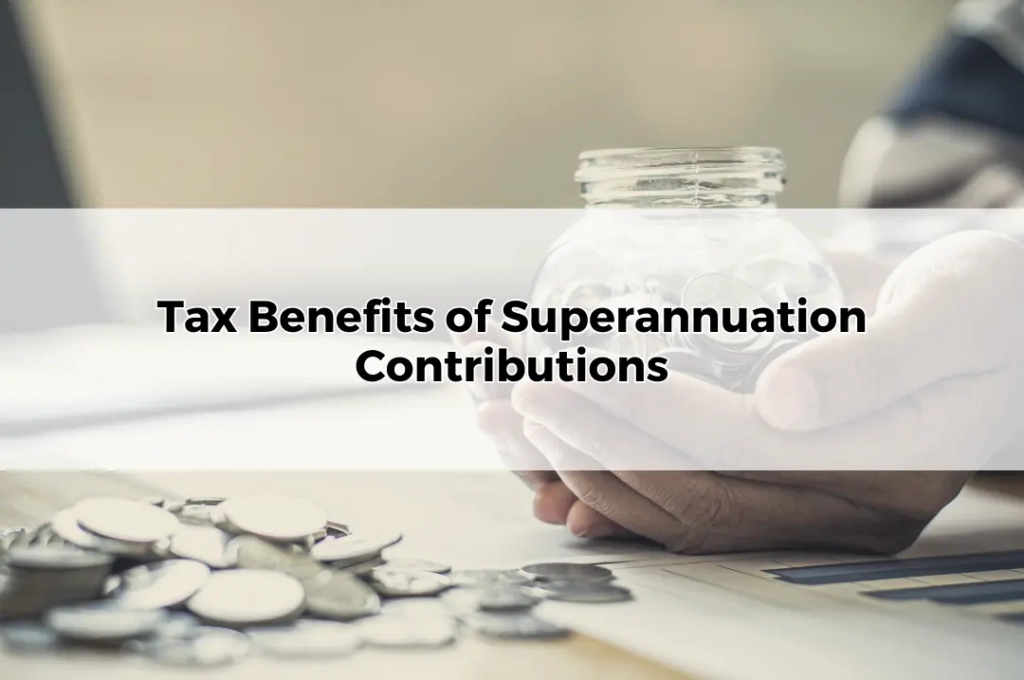Tax Benefits of Superannuation Contributions
Table of Contents
ToggleSuperannuation, or simply “super,” is a long-term savings arrangement designed to ensure individuals have sufficient funds to support themselves during retirement. In Australia, superannuation is a cornerstone of retirement planning, providing financial security and peace of mind for the future.
Superannuation plays a vital role in retirement planning by offering a tax-effective way to save and invest for the long term. It allows individuals to accumulate wealth over their working lives, ensuring a comfortable and financially stable retirement.
Overview of Superannuation Contributions
Types of Contributions
Superannuation contributions come in two primary forms: concessional and non-concessional. Concessional contributions are made from pre-tax income and include employer contributions and salary sacrifice amounts. Non-concessional contributions are made from after-tax income and are not taxed when they enter the super fund.
Contribution Limits
There are annual limits on how much can be contributed to superannuation without incurring additional taxes. From 1 July 2024, the concessional contribution cap is currently set at $30,000. For non-concessional contributions, the limit is $120,000 per year, with the option to bring forward up to three years’ worth of contributions under certain conditions.
Taxation of Superannuation Contributions
Concessional Contributions
Concessional contributions are taxed at a flat rate of 15% within the superannuation fund, which is generally lower than most individuals’ marginal tax rates. This tax treatment makes concessional contributions a highly effective way to reduce taxable income and boost retirement savings.
Non-Concessional Contributions
Non-concessional contributions are made from after-tax income and are not taxed when they enter the super fund. These contributions form part of the tax-free component of the superannuation balance, providing potential tax advantages during the retirement phase.
Tax Benefits of Concessional Contributions
Lower Tax Rate
One of the primary tax benefits of concessional contributions is the lower tax rate. Contributions are taxed at 15% within the super fund, which is significantly lower than the marginal tax rates for most taxpayers. This provides an immediate tax saving and enhances the growth potential of retirement savings.
Salary Sacrifice Arrangements
Salary sacrifice is a popular strategy where an employee agrees to forgo a portion of their pre-tax salary in exchange for additional superannuation contributions. This arrangement can reduce taxable income and increase superannuation savings, providing both immediate and long-term tax benefits.
Tax Benefits of Non-Concessional Contributions
No Contributions Tax
Non-concessional contributions are not subject to contributions tax when they enter the super fund, making them an attractive option for those looking to maximise their superannuation balance without incurring additional taxes.
Tax-Free Investment Returns
Investment returns on non-concessional contributions are generally tax-free once the superannuation fund enters the pension phase. This can result in significant tax savings over time, particularly for individuals with substantial superannuation balances.
Government Co-Contribution Scheme
Eligibility Criteria
The government co-contribution scheme is designed to boost the retirement savings of low to middle-income earners. To be eligible, individuals must make personal after-tax contributions to their super fund and meet certain income thresholds.
Benefits and Limits
Under the scheme, the government matches personal contributions up to a maximum amount, providing an effective way to increase superannuation savings. The co-contribution is capped based on the individual’s income and the amount of personal contributions made.
Low Income Superannuation Tax Offset (LISTO)
Purpose and Benefits
The Low Income Superannuation Tax Offset (LISTO) aims to help low-income earners save for retirement by refunding the tax paid on concessional contributions. This ensures that low-income earners do not miss out on the benefits of superannuation due to their lower income.
Eligibility Requirements
To qualify for LISTO, individuals must have an adjusted taxable income of $37,000 or less. The offset is capped at $500 per year and is automatically credited to the individual’s superannuation account.
Tax-Effective Strategies for Maximising Super Contributions
Making the Most of Concessional Caps
To maximise the tax benefits of superannuation contributions, individuals should aim to fully utilise their concessional contribution caps each year. This strategy not only reduces taxable income but also enhances long-term retirement savings.
Utilising Carry-Forward Provisions
The carry-forward provisions allow individuals to carry forward unused portions of their concessional contribution cap for up to five years, provided their total superannuation balance is below $500,000. This can be particularly beneficial for those with irregular income patterns or who receive windfalls.
Impact of Division 293 Tax
What is Division 293 Tax?
Division 293 tax is an additional tax on concessional contributions for high-income earners. It applies to individuals with income and concessional contributions exceeding $250,000, effectively increasing the contributions tax rate from 15% to 30%.
Implications for High-Income Earners
High-income earners need to be mindful of Division 293 tax when planning their superannuation contributions. While it reduces the tax advantages of concessional contributions, superannuation remains a tax-effective investment vehicle even for those subject to this additional tax.
Spouse Contributions and Tax Benefits
Spouse Contribution Tax Offset
The spouse contribution tax offset encourages individuals to make superannuation contributions on behalf of their low-income or non-working spouses. Contributions up to $3,000 can attract a tax offset of up to 18%, providing a tax saving of up to $540.
Eligibility and Limits
To be eligible for the spouse contribution tax offset, the receiving spouse’s income must be below $40,000. This strategy helps boost the retirement savings of low-income spouses while providing an immediate tax benefit to the contributing spouse.
Tax-Free Pension Phase
Transitioning to Retirement
Once an individual reaches preservation age and retires, they can transition their superannuation into the pension phase. During this phase, investment earnings and withdrawals are generally tax-free, providing significant tax savings.
Tax-Free Income Streams
Superannuation income streams, such as account-based pensions, provide regular, tax-free payments to retirees. This tax-free income supports a comfortable retirement lifestyle and enhances the overall benefits of superannuation.
Estate Planning and Superannuation
Tax Treatment of Death Benefits
The tax treatment of superannuation death benefits depends on the relationship between the deceased and the beneficiary. Payments to dependents are generally tax-free, while non-dependents may face tax on the taxable component.
Strategies for Minimising Tax on Inherited Super
Effective estate planning can help minimise the tax impact on superannuation death benefits. Strategies include nominating dependents as beneficiaries, using reversionary pensions, and considering the tax implications of different beneficiary arrangements.
The tax benefits of superannuation contributions provide significant incentives for Australians to save for retirement. By understanding and utilising these benefits, individuals can enhance their retirement savings, reduce their taxable income, and enjoy a more financially secure future. Whether through concessional or non-concessional contributions, government schemes, or strategic planning, superannuation offers a range of tax-effective options to support long-term financial goals









